Rockwell B-1 Lancer Strategic Bomber (2 part)
The B-1 project was modified in accordance with this concept in order to increase the flight range and combat load, as well as to reduce the visibility while reducing the maximum speed to a small supersonic one. As an alternative to the B-1 aircraft, upgraded versions of the B-52 and FB-111 bomber (under the designation FB-111H), as well as a wide-body carrier aircraft based on Boeing 747-200, were considered. Compared to them, the B-1 is the only aircraft that possesses the required combination of strategic flight range with high initial (or pre-combat) survival.
The aforementioned principle of the triad of US strategic nuclear forces was developed at the beginning of the 1960s under the leadership of then Secretary of Defense R. Macknamara as a reliable means of guaranteed retaliatory strike. Therefore, for each element of the triad (ICBM, SLBM, and airplanes), ways of surviving in the event of a sudden nuclear missile attack were provided. Including, initially, the requirements for the B-1 aircraft reflected the conditions ensuring its survival at home based airfields with concrete runways. Among them:
the ability to dispersed basing, which is provided by the use, firstly, of engines with afterburner chamber and variable sweep wing with high BOP and, secondly, of tanker trucks, which allow to take off with incomplete refueling and limited mass;
the possibility of a long autonomous maintenance of combat readiness of dispersed aircraft without ground support, which is provided by the CITS central integrated control system;
the ability to quickly leave the airfield at the command of an alarm with the help of an accelerated engine start system (from ground-based energy sources or from the Armed Forces of Ukraine) and an accelerated exhibition system of inertial navigation devices, as well as due to the high thrust-to-weight ratio and minimal aerodynamic resistance of the wing;
high resistance to damaging nuclear factors weapons (light and electromagnetic pulse, radiation and shock wave) of all aircraft systems, as well as the security of its crew.
The B-1 aircraft has unique characteristics of initial survival, surpassing the B-52 by 2-3 times in some parameters. The FB-1 was capable of competing with the B-111 in this regard, which, moreover, could be hidden in a strong protective hangar, but it did not have the required flight range. Thus, as a weapon of retaliation among the American aviation B-1 had no equal systems.
In addition, the choice of basic design solutions (variable swept wing and forced engines) in the B-1 concept was able to consistently agree on the requirements for survival on the ground and in the event of air defense breakthrough. These means make it possible to achieve both high take-off and landing characteristics, as well as a high subsonic speed of a long flight at the ground outside the radio horizon. In terms of ground speed, the B-1 was significantly ahead of the B-52 (up to M = 0,95 instead of M = 0,55). Although the FB-111 has a maximum ground speed near B-1, its extended range FB-111Н was still to be created.
B-1 also had the most mature design: by the end of 29 on April 1981 of the flight tests of four experienced bombers, their total flight time was 1895,2 h in 347 flights (the maximum number M = 2,1 at the height of 15240 m was reached, the longest flight duration was 9 h 40 m), the amount of testing 47 of various models in 17 of various ADTs reached almost 28000 h, the glider of the aircraft passed fatigue tests equivalent to three calculated resources, tests on the use of weapons included a discharge around 45 training bombs B-61 and p Wounds two SD SRAM. In this regard, B-1 was actually out of competition and October 2 1981. US President Reagan announced the decision to build 100 aircraft in an improved version of B-1В (previously built prototype aircraft were designated as B-1А). Simultaneously with the Northrop company, a contract was signed for the development of an unobtrusive ATV bomber, which later became known as the B-2. So B-1 became, in turn, following the FB-111, an intermediate aircraft.
The B-1B has almost the same configuration as the B-1A. The differences are mainly in a significant (at 36 t) increase in the maximum take-off weight and the possibility of placing a combat load not only in the bomb compartments, but also on the external suspension (the external suspension was not implemented by 1994), some reduction in the length of the aircraft, as well as in advanced equipment. The increase in aircraft mass did not lead to significant structural changes (only the chassis and wheel brakes were strengthened), because Rockwell predicted that 99% of all combat missions would be performed at 159-177 t, as in the original B-1A. The task of air defense breakthrough at a low altitude, which places the highest demands on the strength of the structure, should be carried out using weapons in the internal compartments.
It would be appropriate to say that the increase in the maximum take-off mass of the B-1В aircraft is practically unrelated to the revision of the concept and the introduction of design changes. As the analysis shows, the main reason for this is that during the technical development of its predecessor, the B-1 aircraft, the design characteristics have deteriorated since the conclusion of the contract so that it ceased to fulfill the requirements of the US Air Force for the main flight profile at 11300 km . Inspection of the project in 1973 showed that the likely increase in the mass of the empty aircraft will be 19%, and the specific fuel consumption of engines in subsonic flight will increase by 5%.
To compensate for the adverse effects of these factors, the company was forced to use a removable fuel tank to accommodate additional fuel and increase the maximum flight weight of the aircraft after refueling in flight along the main profile. Accordingly, the calculated take-off weight also increased.
However, this would not be enough. The final solution to the problem of flight range was facilitated by the modernization of the KS-135A tanker fleet in the KC-135R / E variants, equipped with more economical dual-circuit engines instead of the previously installed single-circuit turbojet engines. This made it possible to increase the removal of the refueling line and the mass of the transferred fuel. The United States Air Force began upgrading its tankers in the 1981-1982, i.e. simultaneously with the work on the B-1B.
One of the main areas of work when creating a B-1V was to ensure its low visibility. Although it was obviously impossible to reach the level of specialized aircraft (B-2, F-117), according to American data, the efforts were crowned with success: it was possible to reduce the effective dispersion surface (ESR) from about 10 and 2 in B-1 to 1- 3 m 2 y B-1B, which is significantly less than the previous bomber B-52 (up to 100 m 2). According to other, more conservative estimates, the ESR of the B-1 is reduced by only four times compared to the B-52, but this can also be considered a useful result. Reducing the EPR is achieved by using radio-absorbing materials (in the design of the front and rear inclined partitions, fixed wing parts, in the interceptor zone, flaps, horizontal tail), changing the design of engine nacelles and shielding their fans, using electromagnetic pads from twisted wire in manhole seals and structural connections, tilt the radar antenna down at an angle of 30 °, metallization of the glazing of the cabin. However, the reduced visibility of the B-1В in combination with low-altitude flight and the use of the EW complex, while increasing the survival rate of the aircraft during the air defense breakthrough, at the same time, according to the Americans themselves, does not guarantee its invulnerability from the new Russian air defense system. For example, in 1987, the then Chief of Staff of the United States Air Force L.Welch said: “I hope that we will not find crews so stupid as to try to fly over SA-10 SA-13” (Russian designation: C-300 PMU).
In 1982, it was reported that Rockwell, together with Lockheed, known for her work on low-profile vehicles (F-117 aircraft), is planning to develop a specialized low-profile variant of the B-1C (“third generation”), which should compete with the B-2 bomber. However, these plans were not implemented in the same way as the idea of creating a long-range interceptor with adjustable air intakes and the maximum number M = 2,2 had no continuation.
The first flight of the modified B-1A aircraft, which was used as a pilot on the B-1В program, took place on 23 in March on 1983. Despite extensive tests of the B-1А aircraft previously conducted, the new test program was not without incident. 29 August 1984. The B-1А N2 crashed due to a crew error committed in manually controlling the centering of the aircraft: the wing consoles were moved from the sweep angle 55 ° to the minimum sweep position and were accompanied by an erroneous setting of the switch for balancing the transfer of fuel back, which led cabling of the aircraft with access to the angle of attack 70 ° and stalling. The crew left the plane in the rescue capsule, but due to the malfunction of the parachute system, the capsule hit the ground with the nose, resulting in the death of the company's chief pilot (who was also the president of the US Test Pilot Society), and two other crew members were seriously injured.
The first production aircraft, B-1B, first flew 18 on October 1984 in October. Deliveries to the strategic aviation command of the US Air Force began on 27 in July 1985 and ended on 30 in April on 1988. (pcs. Texas), Ellsworth (pcs. South Dakota), Grand Forks (ngg.North Dakota) and McConnell (pcs. Kansas). Four aircraft were lost in flight accidents, in 1986-1993. It was supposed to put 1994 out of the remaining 13 airplanes to be conserved in order to be used further as a reserve in case of loss of operating aircraft.
Four contractors (Rockwell, General Electric, Boeing and Eaton), 1 main subcontractors and more 50 suppliers participated in the B-3000В aircraft program. In 1986, when the maximum production rate was reached (four aircraft per month), the number of people employed in the program exceeded 50000 people, including 27000 people. at Rockwell's factories. Approximately 1 working drawings were developed for the production of the B-18000B, spare parts for each aircraft include at least 460500 parts.
July 4 and September 17 1987 on the B-1 B aircraft 36 world records of speed and range were set on flights with a load of 30000 kg on closed routes of the length in the first case 2000 km with an average speed of 1078,2 km / h, and in the second case - 5000 km at an average speed of 1054,2 km / h. In August, 1993, as part of the Global Enterprise exercise (Global Enterprise), two B-1B aircraft made a round-the-world flight with one intermediate landing to train crews on long-haul flights. This is the longest flight of the aircraft B-1B.
The first launch of the AGM-69 SRAM from the В-1В aircraft was carried out on 16 on January 1987, however SRAM missiles were not included in the B-1В loading, as they were later removed from the armament due to the expiration of storage periods. The first AGM-86B rocket was launched from B-1B 24 in November 1987, but by 1993, these CRs and advanced AGM-129 CRs were not yet incorporated into the aircraft’s armament.
The technical problems discussed below, as well as the unpreparedness of aircraft for the use of non-nuclear weapons, caused B-1B to not be used during the Gulf war at the beginning of 1991. In this, B-1B reiterated the fate of the first intercontinental bomber Konver V -36, who did not take part in the Korean war 1950-1953. due to lengthy refinement and operational difficulties.
Putting B-1B into operation was accompanied by a number of major problems. Due to the unsatisfactory performance of the flight control system, the take-off weight of the aircraft was initially limited to 145 t. Later, due to the installation of stall prevention systems (SIS) and the increase of stability (SEF), the restrictions were relaxed. In October 1986, the maximum allowable flight weight was 187,3 t, and in September 1987, during record flight, the take-off weight reached 199,6 t. Later, after finalizing the SIS and SEF systems, the actual maximum take-off weight exceeded 200 t, although apparently 1994, it has not yet been brought to the calculated value 216365 kg. Due to various problems (engine failures, cracks in the landing gear design, aircraft icing), the fleet of the B-1В fleet was forbidden by 1992 several times.
But the largest drawback of the aircraft is the unsatisfactory performance of the AN / ALQ-161 defense system. By the fall of 1992, on an 13 aircraft, the EW system had not yet been installed, and on bombers equipped with an EW complex, the radar-radiation warning system was not fully operational under the conditions of the electromagnetic environment (enemy stations), which led to poor crew awareness setting. The most serious problem of this system is the lack of stability of its characteristics, and the individual components of the system worked well in laboratory conditions, but in a complex form, the system was unsuccessful.
To solve problems with the defensive system that threatened the survival of B-1В in combat, the air force G.TTT A in September 1992 decided to carry out a three-stage program for improving the B-10В fleet calculated for 1 years. First of all, it is planned to improve the warning system for PJI exposure, although, according to some estimates, it will not be possible to bring it to the level of TK requirements. It is also planned to improve the characteristics of onboard stations for jamming when flying B-1В at medium and high altitudes (when designing the station, they were optimized for low-altitude flight conditions). The software must be modified to highlight priority objectives in conventional bombing, and, as noted above, it is intended to ensure the use of precision-guided weapons from an aircraft. In general, the main task is to make possible long-term hostilities with strikes in any region of the world when operating the aircraft both from the territory of the United States and from advanced bases.
In 1990's, B-1B planes are supposed to be used mainly as air defense breakthrough bombers instead of B-52 aircraft, which are redirected to be used as carriers of the Kyrgyz Republic for attacks without entering the enemy’s air defense zone and for performing operations using conventional weapons . With the entry into service of the new bomber breakthrough - B-2 - B-1В planes, in turn, were supposed to be redirected to the tasks of the carrier of the Kyrgyz Republic or a conventional bomber, however due to a sharp decrease in the number of ordered B-2 aircraft and delaying their arrival time the armaments of the B-1B will, apparently, for a long time play the role of main breakthrough bombers.
At the same time, the collapse of the USSR led to the cancellation of the round-the-clock duty of strategic bombers with nuclear weapons and the increasing potential role of B-1В as carriers of conventional weapons. According to the plans of the US Air Force, part of the B-1 and B-52 aircraft will be transferred from regular air forces to the National Guard Air Force and the Air Force reserve. Transferred conventional weapons bombers should be used in crisis situations. In the future, part of the B-1 B bombers are also expected to be transferred to the American wing of rapid deployment. This wing will be able to perform large-scale and deep night operations to isolate the combat area. The structure of the aircraft’s armament will include JDAM and JSOW high-precision adjustable bombs (which are supposed to ensure accuracy of bombing from a great height of no more than 10 m). It is expected that the B-1В with weapons from these bombs will be able to be used in the initial stages of the conflict to fight the enemy’s armored forces, acting in conjunction with the E-8 JSTARS radar reconnaissance aircraft. Thus, despite the difficulties of commissioning, В-1В must find its place in the American aviation, and not only in the strategic forces, where the USA (despite all the troubles stories) heavy bombers have always been assigned a significantly larger role than Russia, but also as part of the operational-tactical forces.
At the same time, the effectiveness of the B-1B with conventional weapons in the early 1990s was no higher than that of the B-52. During the Gunsmoke bombing race in the fall of 1993, during which the B-1B and B-52 competed with each other for the first time, a group of B-52 aircraft won. The conditions of the competition were to drop bombs with a caliber of 227 kg for single targets. Bombing under these conditions was difficult due to the fact that the navigation systems of the aircraft have insufficient accuracy, and radars are unable to detect targets like tanks on a “saturated” landfill. According to the pilots, "dropping one bomb at a time is not the way these bombers are designed for ... it's like a shot at random in the dark."
B-1B is inferior to its Russian counterpart Tu-160 in a number of characteristics: maximum payload, range, maximum speed (a more detailed comparison of these aircraft is given in the section on Tu-160), but the piloting qualities of both machines are about the same. This is evidenced by the Commander-in-Chief of the Russian Air Force, PS Deinekin, who visited the USA in May 1992 in response to a visit to Russia by a representative of the US armed forces in 1991. May 11 Deinekin flew a B-1В bomber. The aircraft took off with a small mass (about 150 t) and after refueling in the air, taking place through 4 m after takeoff, headed to the landfill zone (Nevada) to work out a strike on a tactical target, which was a model of an airfield. The flight to a target at a distance of about 800 km took place at an altitude of 90 m in an automatic mode following the terrain with a top flight and bypass in the horizontal plane of ground obstacles, the height of which reached 1500 m. The plane struck a tactical bombing strike on the target and performed an anti-foam maneuver, after which control of the aircraft was transferred to Deinekin.
The honored military pilot Deinekin, before being appointed to the post of Commander-in-Chief of the Russian Air Force, was commander of long-range aviation and was well acquainted with heavy bombers. He has extensive experience in piloting the Tu-22M bomber, on which he flew at altitudes up to 1976-45 m (50 m on the instrument) in 100, he also performed several flights on Tu-160 even before this aircraft was put into service. Therefore, piloting the aircraft B-1V for him was not a problem. He tested the aircraft in several modes and at the end dropped to a height of 65 m, and then 50 m. The American pilots were “pleasantly surprised” and emotionally stated that “our generals do not fly like that”.
According to Deinekin, expressed in an interview with the authors of the book, the B-1В has approximately the same handling characteristics as the Russian Tu-160, but the practical methods of control of the B-1В and Tu-160 are very different due to different piloting techniques adopted in USA and Russia. For example, when piloting Russian heavy planes, stronger restrictions on overload are imposed; when landing, the plane goes not in a box, but is turned into a “pancake”. The American pilots fly boldly over the banks, overloads, the range of heights and "piloting the strategic B-1В as a front bomber." For example, immediately after takeoff, the American pilot laid a U-turn with a large (up to 60 °) roll. After refueling in the air that occurred at an altitude of 6000 m (he scored this altitude for 4 m due to a high climb rate), the output to the automatic mode of following the terrain at an altitude of 90 m was made with a steep dive. Before landing, the B-1B flew in a box with steep turns (roll 30-45 °) and dropped sharply (“fell like an iron”) for landing. Of the other advantages of the American car, Deinekin noted good ergonomics and high quality of instruments in the B-1В cockpit (the indicator screen has a nice bottle color, the artificial horizon tracks the slightest heels).
The cost of the B-1В aircraft program was limited by the US Congress to 20,5 billion dollars at the 1982 exchange rate (28 billion dollars at the 1988 exchange rate), including the cost of serial production of 12,3 billion dollars. The price of one aircraft, taking into account all the costs of the program was 237,2 million dollars for the first 52 aircraft and 168,9 million dollars - for the remaining 48. The ten-year aircraft modernization program discussed above will cost 1,9 billion more.
- Ilyin V.E., Levin M.A.
- Rockwell B-1 Lancer Strategic Bomber (1 part)
Rockwell B-1 Lancer Strategic Bomber (2 part)
Rockwell B-1 Lancer Strategic Bomber (3 part)
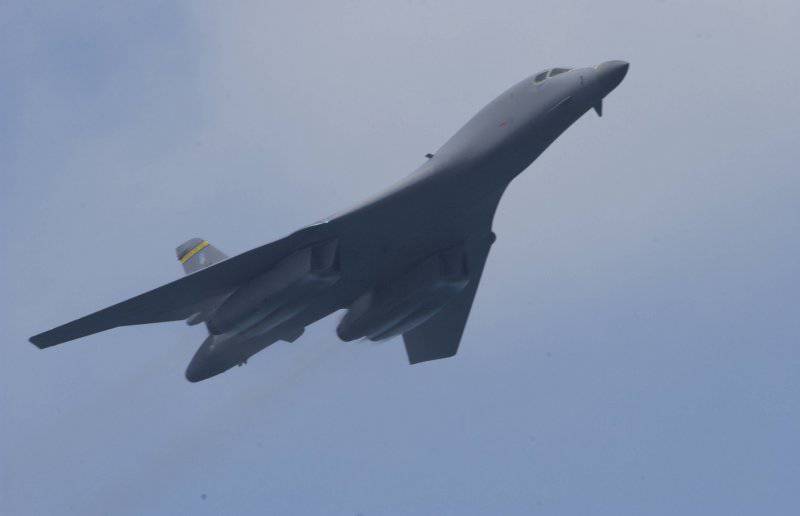
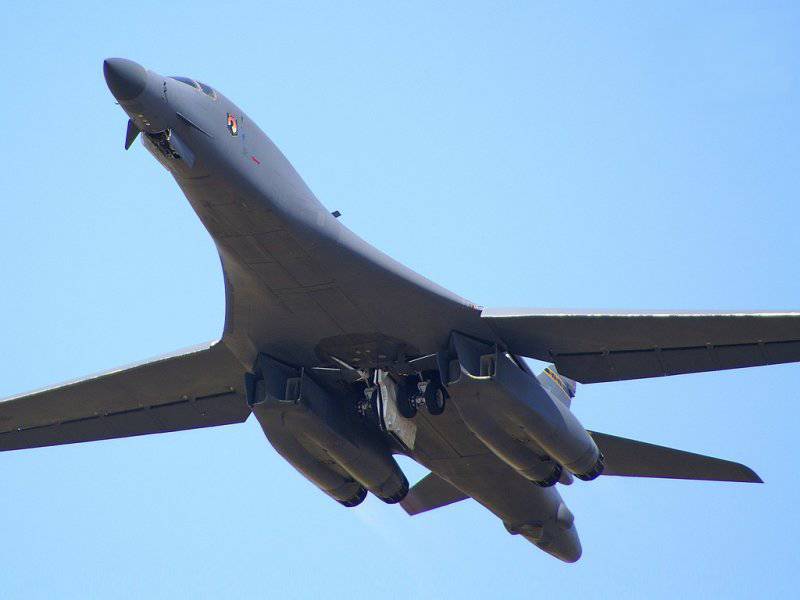
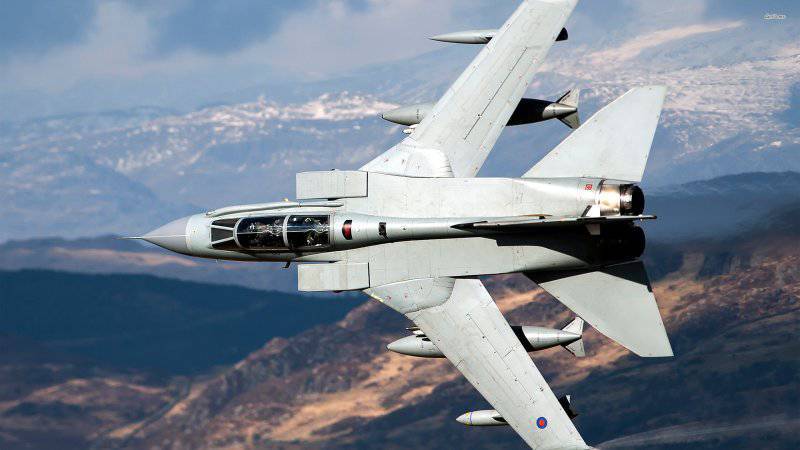
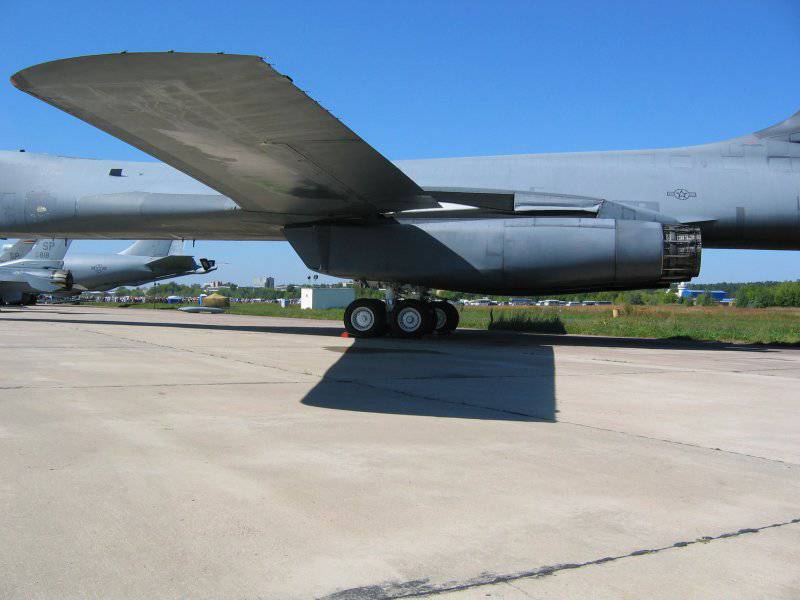
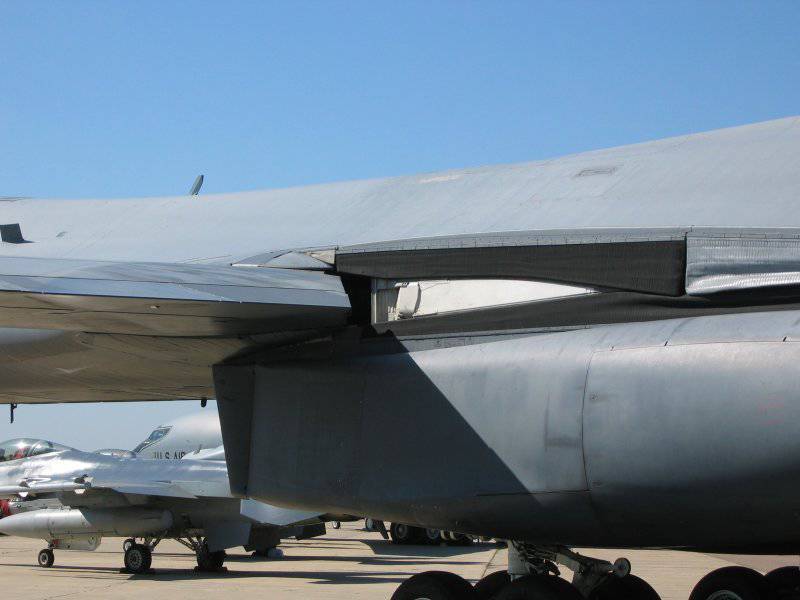
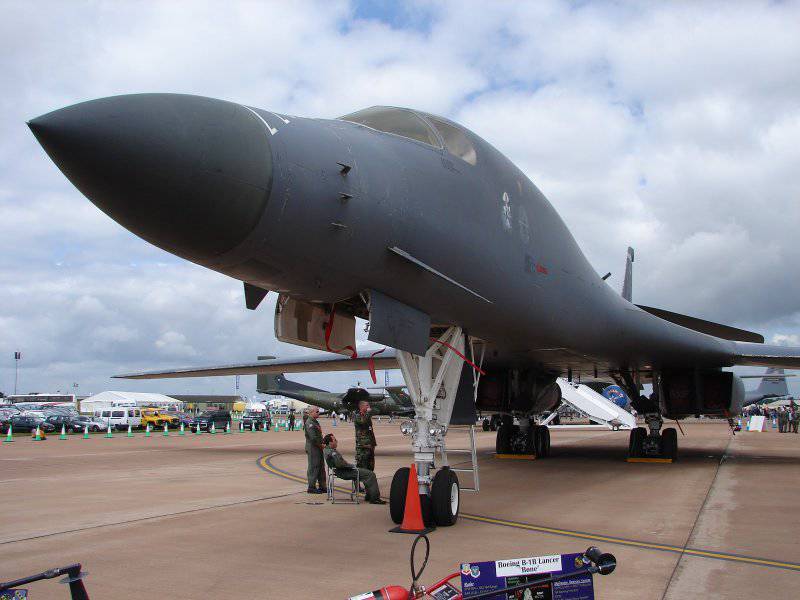
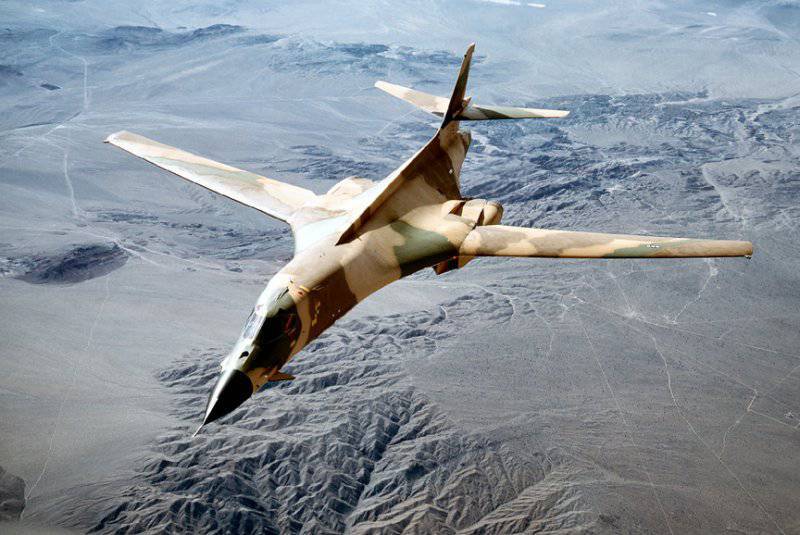
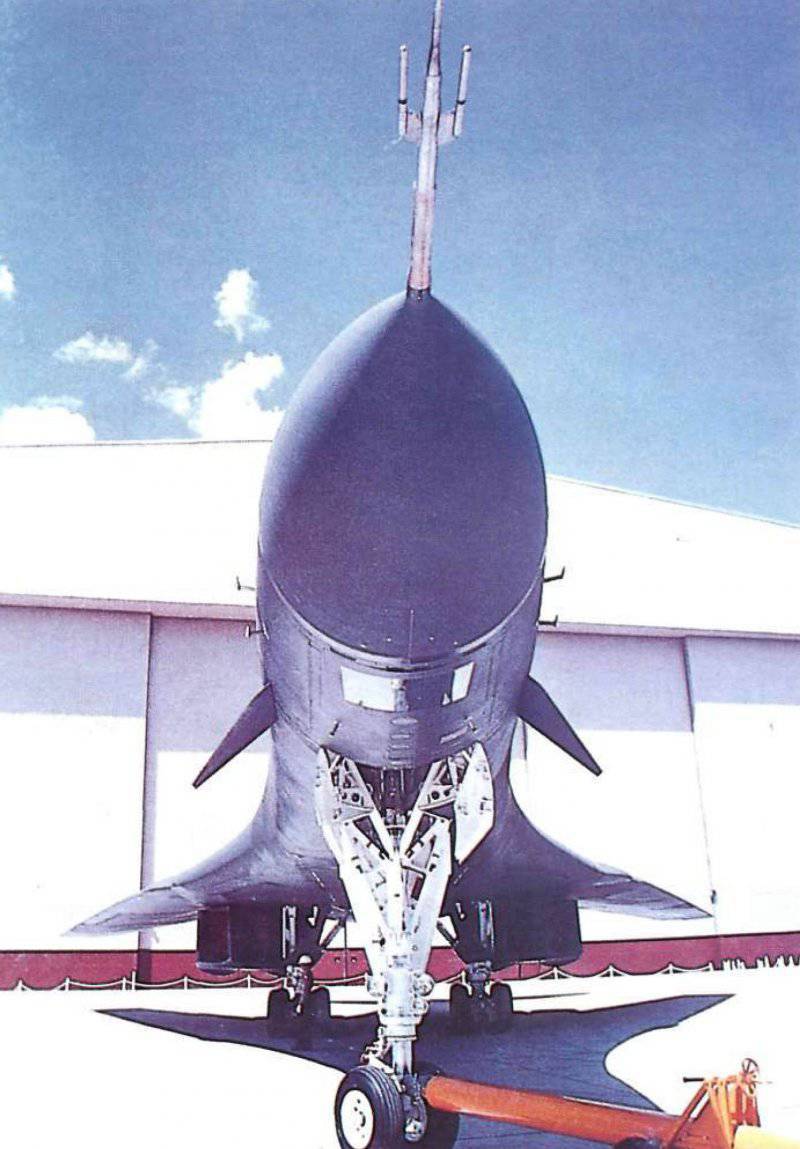
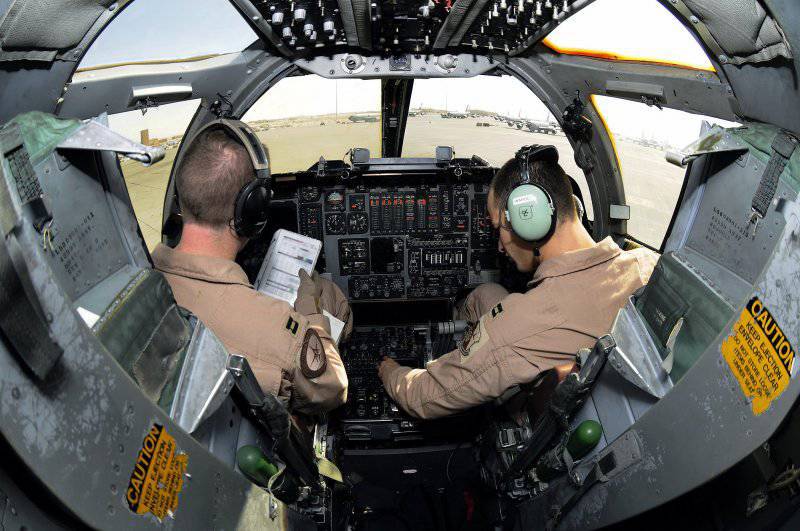
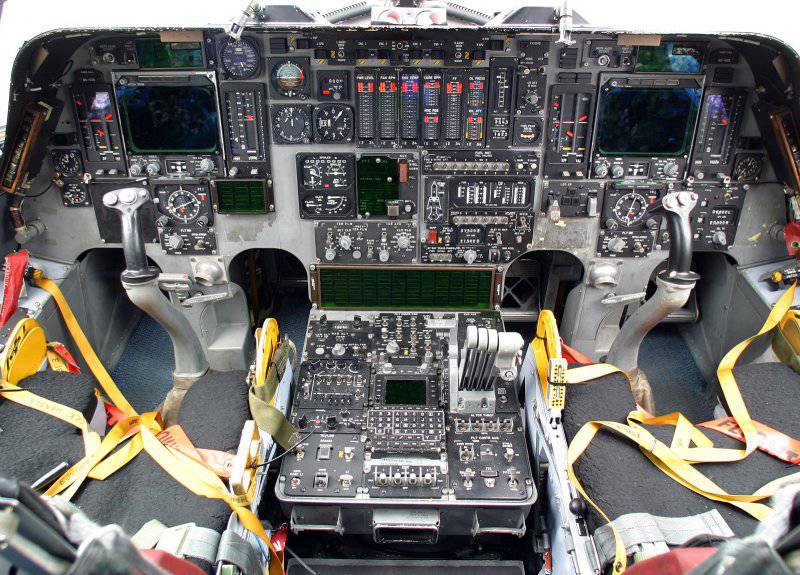
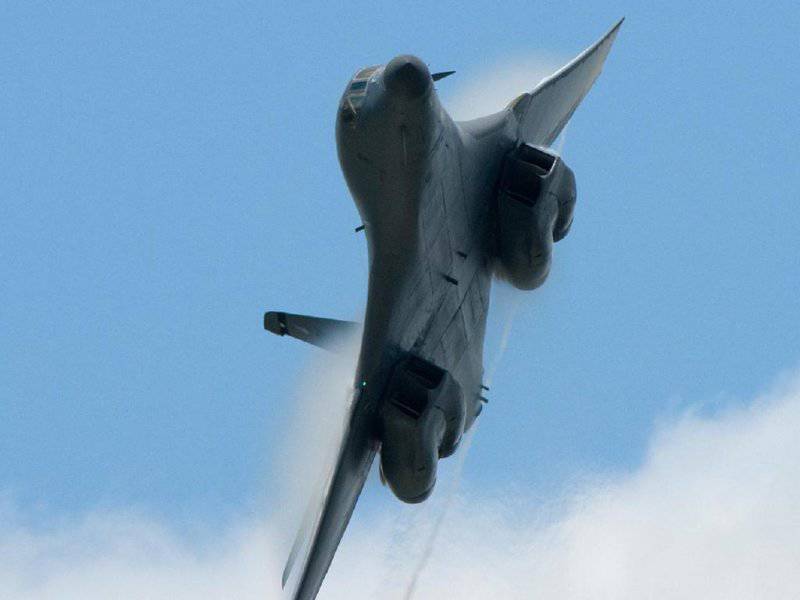
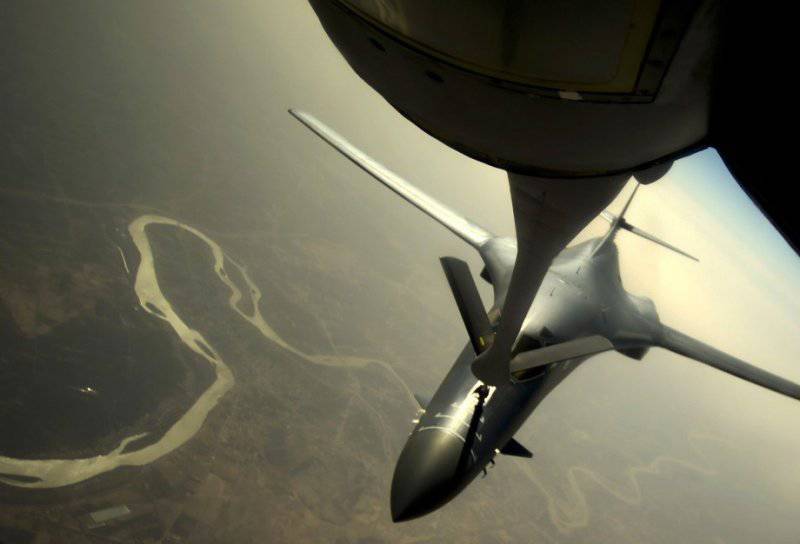
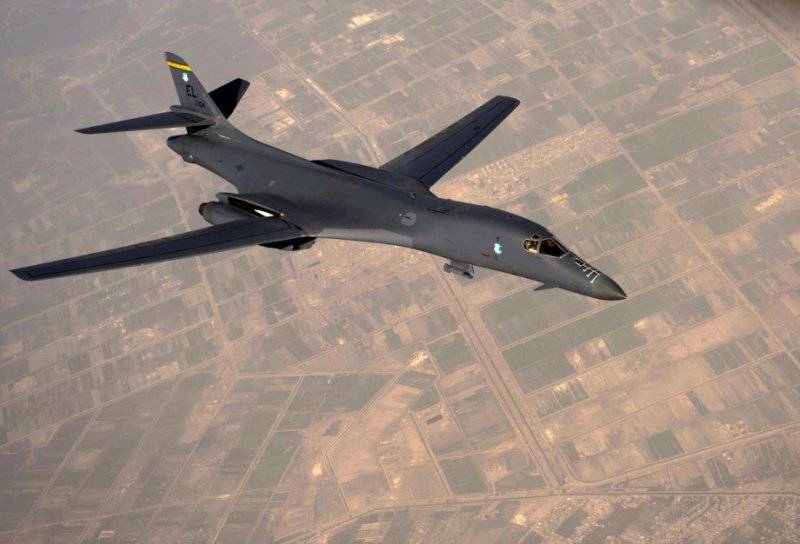
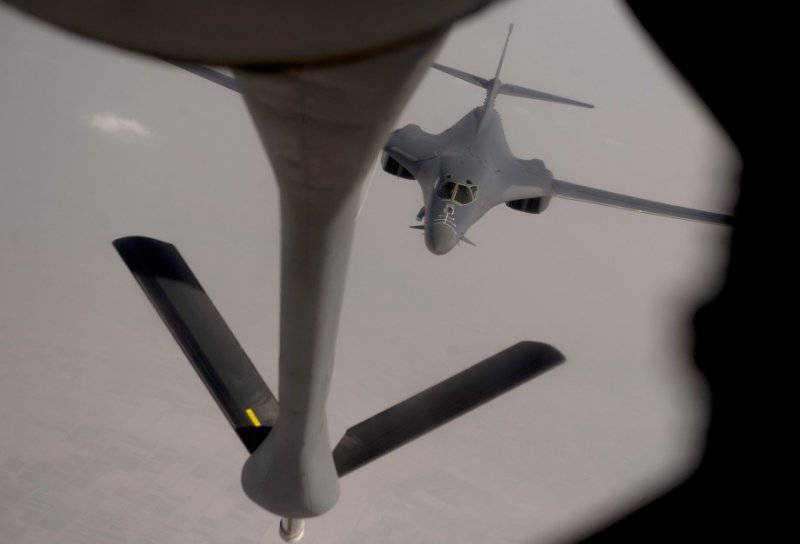
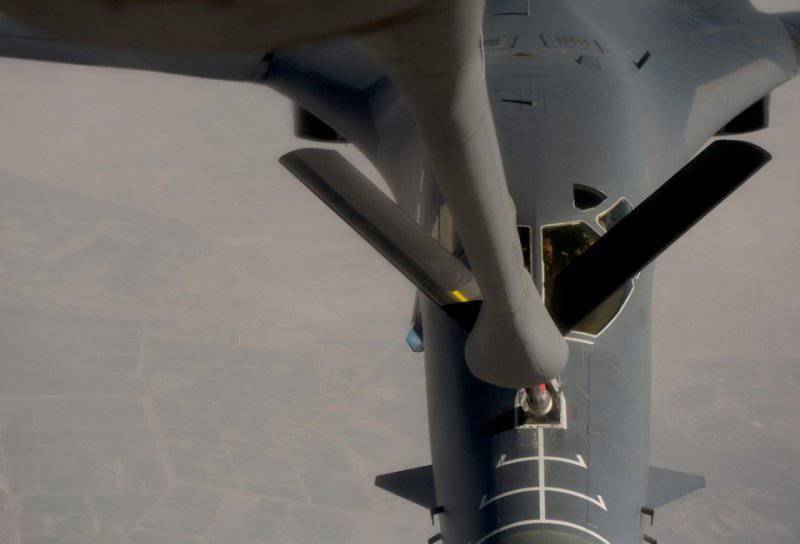
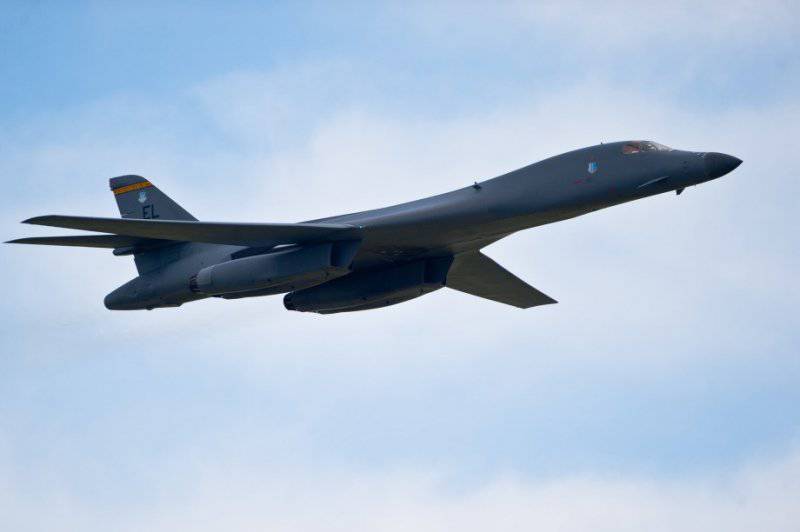
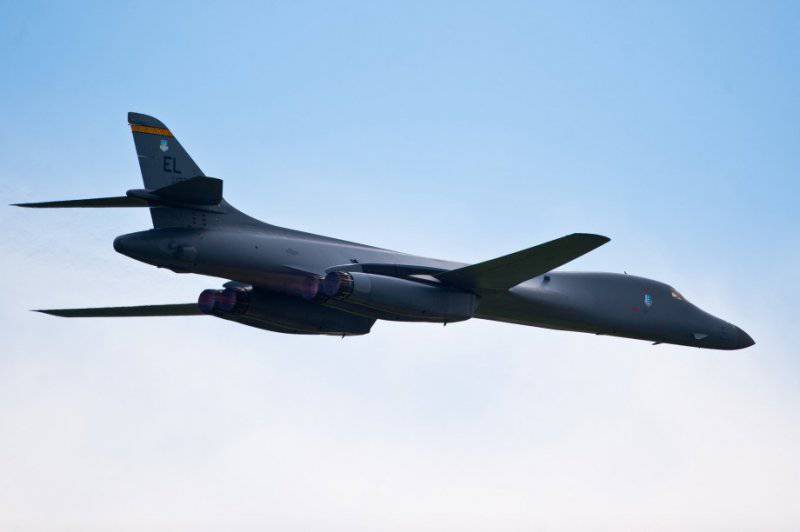
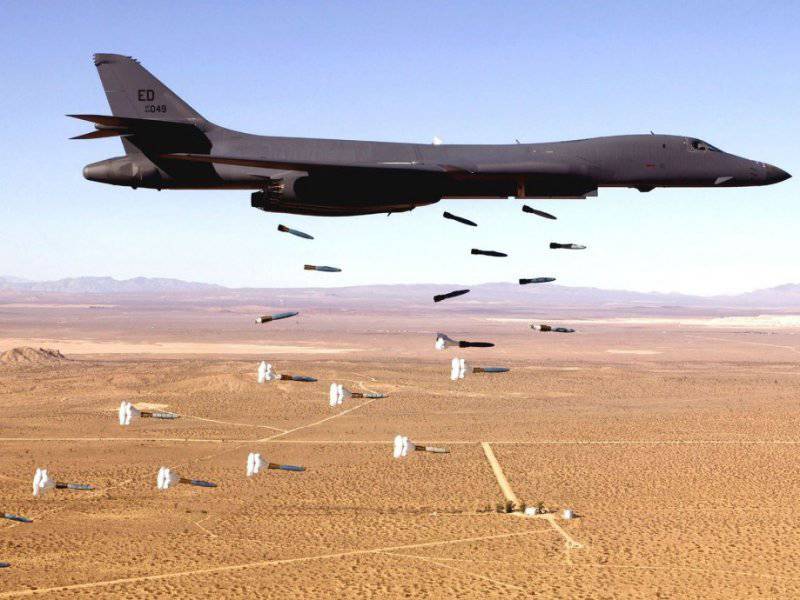
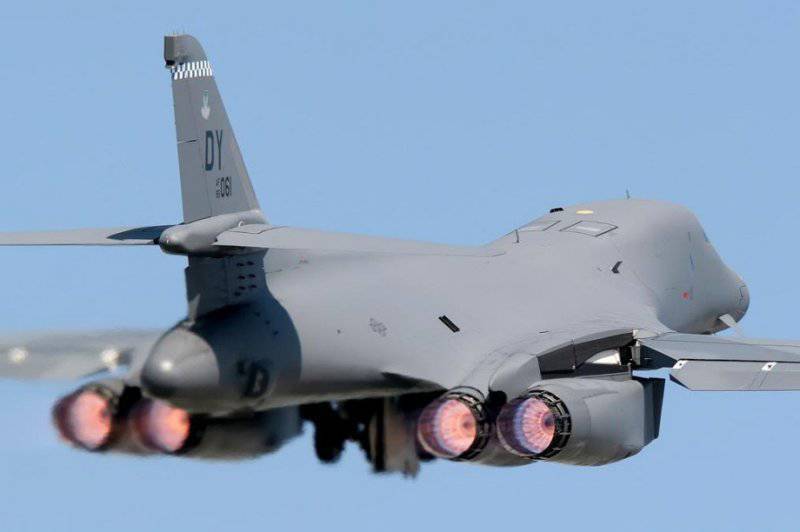
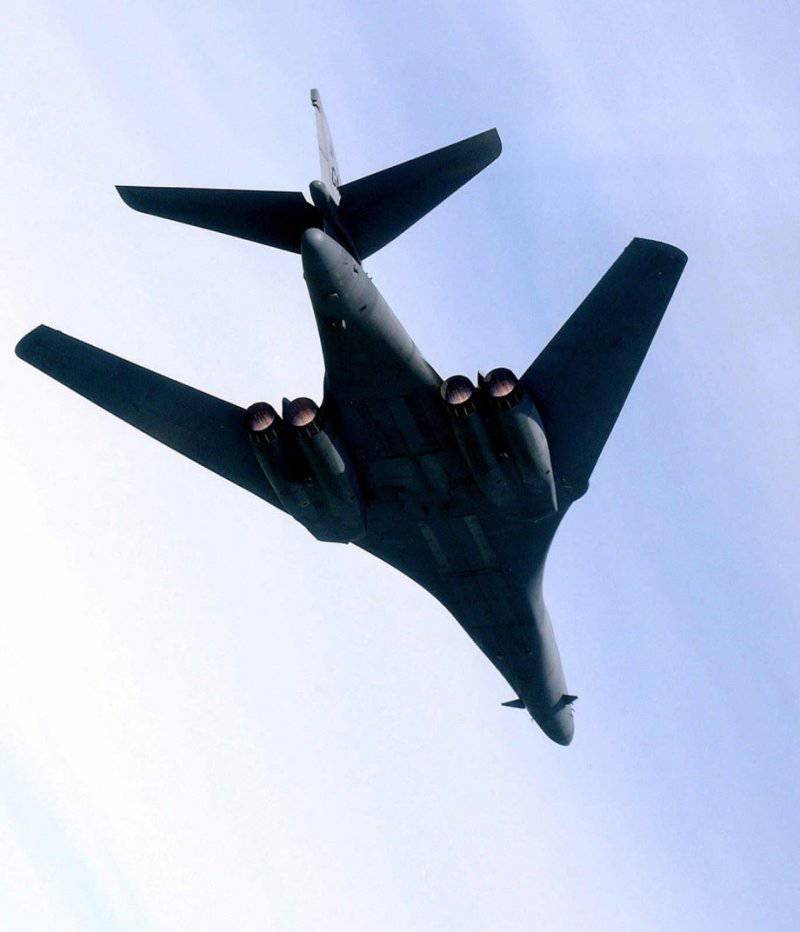
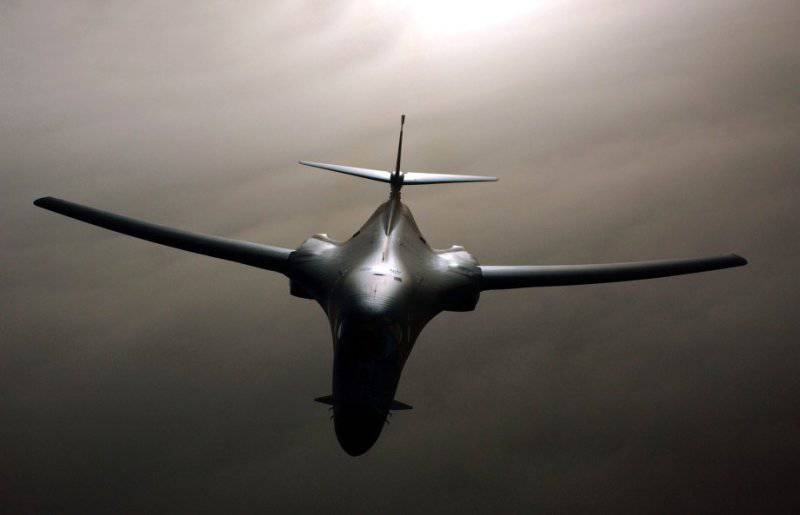
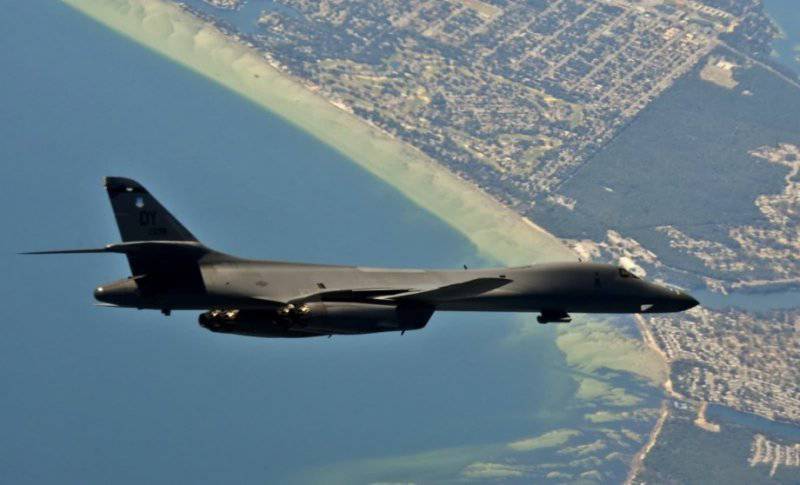
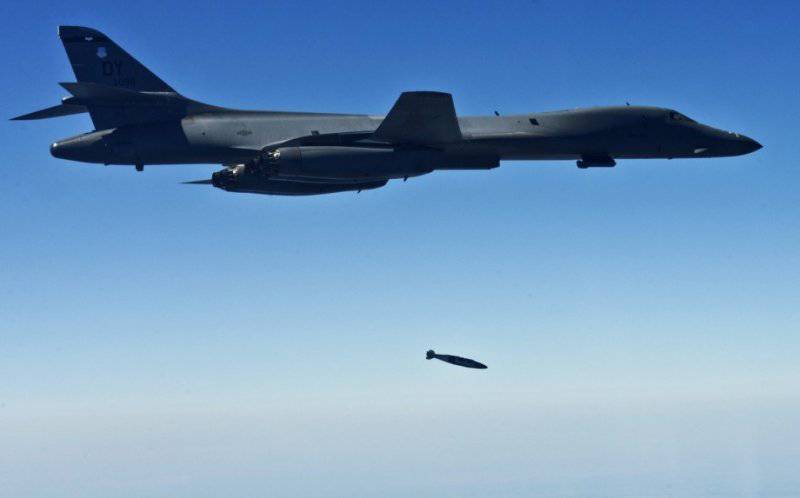
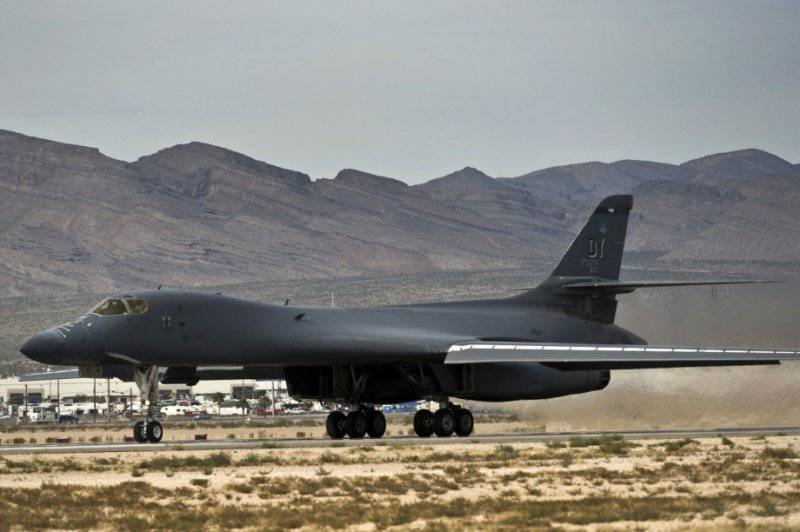
Information